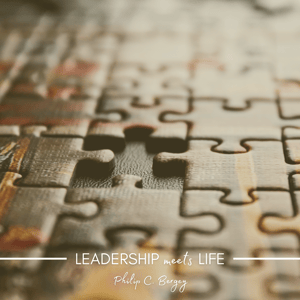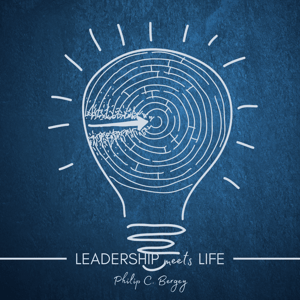
How do ideas get generated? And how do problems get solved?
Let's look first at idea generation.
Researcher Margaret Boden describes three types of creative idea generation processes: combinational creativity, exploratory creativity, and transformational creativity.
Innovation blogger Yorum Solomon in an inc.com post, 4 Processes That Generate Big Ideas, adds a fourth: team-based combinational creativity.
Here are Solomon's quick definitions of four types of psychological and cognitive processes involved in idea generation.
-
-
- Combinational creativity: "the generation of new ideas through the combination of old ideas"
- Exploratory creativity: "The premise of exploratory creativity is that the new idea is not in your head yet, but that ideas already in your head would only lead you to explore beyond them."
- Transformational creativity: "The premise of transformational creativity is assuming (or hypothesizing) that an idea (or a few) in your head are actually wrong, and exploring the possibilities that result from accepting it."
- Team-based combinational creativity: Solomon adds to Boden's three forms. "The 3 processes described above rely on creative ideas generated in one brain of one person. However, ideas can also be generated by a team of creative people, with the right diversity, and the right dynamics, by which the old ideas, pieces of the new idea, actually reside with multiple people, and the team dynamics, through debate and communications will generate the combination."
-
 In reality, we use a combination of these processes when we need innovation or want to tackle problems that have us stumped.
In reality, we use a combination of these processes when we need innovation or want to tackle problems that have us stumped.
As I highlighted in a recent podcast episode, we humans solve problems in one of two primary ways:
-
-
- We either tend to rely on moments of insight,
- or we approach problems analytically.
-
You can learn more about how insight happens and how to help it happen more often in my Leadership Meets Life podcast episode 13, Insight: A Great Speculative Leap. Check it out.
When we approach problems analytically—as opposed to using insight—we begin with defining the problem. Then we try to understand the problem through some form of analysis. Some approaches require taking things apart. However, some issues don't lend themselves to take-apart-ability.
In a previous Leadership Meets Life blog post and podcast, I explained the differences between technical problems that have known solutions and adaptive challenges that not only lack an immediate solution but also may be difficult to even frame as a question. You can check them out in the Resources section below.
So what are examples of solving problems analytically?
In the spirit of my Leadership Meets Life blog and podcast, I like to share accessible tools, resources, and approaches for you to apply to leadership and life.
 There's an excellent resource called The Decision Book: 50 Models for Strategic Thinking by Mikael Krogerus and Roman Tschäppeler.
There's an excellent resource called The Decision Book: 50 Models for Strategic Thinking by Mikael Krogerus and Roman Tschäppeler.
Not only does this little book describe and demonstrate 50 models concisely, it does so in an orderly way, broken down into four sections: how to improve yourself, how to understand yourself better, how to understand others better, and how to improve others.
It's a great tool to use as an idea prompter as you're puzzling over a particular challenge.
Here are a few examples from The Decision Book that you might find helpful.
-
-
- Drexler-Sibbet Team Performance Model describes the goals of each of the seven stages that groups go through when carrying out a project: Orientation, Trust Building, Goal Clarification, Commitment, Implementation, High Performance, and Renewal.
- The Crossroads Model is a simple approach to help create clarity or provide discernment using questions, including What is really important to you? Which people are important to you? What are you afraid of? And others.
- The Black Swan is a principle that explores our inability to predict the future from the past. Consider that a turkey is fed every day, so it grows fat, but it never imagines that it will face the butcher one day. The 9/11 tragedy in New York City was a black swan event.
-
The specific models in The Decision Book can be helpful. Still, I also find simply reviewing or perusing the book helps me consider the next steps in my thinking process to address a particular problem.
One more model you might find helpful to analyze a problem analytically is called The 5 Whys.
Sakichi Toyoda, a Japanese inventor and founder of Toyota Industries, developed the 5 Why approach in the 1930s to address the root cause of problems that were not getting resolved. Here's a great little video and how-to article from MindTools® on using the 5 Whys.

In my next Leadership Meets Life podcast episode and blog post we’ll build on the neuroscience of creativity and problem solving by looking at the phenomenon of “flow,” that magic space-time intersection when we get caught up in what we’re doing, and time seems to fly.
If you haven’t already done so, check out my Leadership Meets Life Podcast!

-
-
- Primary Source: The Neuroscience School, led by Dr. Irena O’Brien
- Article: Yoram Solomon, 4 Processes That Generate Big Ideas
- Article: Margaret A. Boden, “Creativity as a Neuroscientific Mystery” (in the book Neuroscience of Creativity, MIT Press, 2013)
- Book: Mikael Krogerus and Roman Tschäppeler, The Decision Book: 50 Models for Strategic Thinking
- Podcast Episode: Leadership Meets Life on technical and adaptive challenges, by Phil Bergey: Technically Speaking, It’s Adaptive - Tackling Challenges in a Changing World
- Blog Post: Leadership Meets Life on technical problems and adaptive challenges, by Phil Bergey: Leadership Fruit Bowl: Navigating Technical & Adaptive Challenges With Your Team
- Video: Rainn Wilson, David Eagleman & Others, Creativity: The Science Behind the Madness
-
Let me know how you’re connecting with the Leadership Meets Life Blog and Podcast. I’d love to hear from you! You can reach me directly at philb@designgroupintl.com or by visiting my website.
Stay well.
/Philip%20C.%20Bergey%20Headshot%20(300x300).png)
June 28, 2022
.png?width=100&name=Phil%20Bergey%20Headshot%20(1).png)






Comments